Giraffe: Iconic African Animals
Giraffe are iconic African animals and often glean an enthusiastic response from safari guests at Kariega Game Reserve in South Africa. Safari field guide Reece Dodd captures these iconic animals beautifully in this video.
The unusual looks and inexplicable elegance of giraffes often fills people with amazement and wonder when they first see one.
The name giraffe is derived from the Arabic zarāfah which means “fast walker”. In our local isiXhosa language, they are called “indlulamithi” which translates to “above the trees”.
The Romans, under Julius Cesar, brought giraffes to Europe in 46 BC. They understandably developed a fascination with the animal and, thinking that it was a union between a camel and a leopard, they called it a camelopard. However, we now know that the giraffe is not related to the camel.
Giraffe are only one of two living animals in the family Giraffidae, the other is the okapi. The okapi, pictured below, is endemic to the Democratic Republic of the Congo. The okapi is an even stranger animal resembling a zebra and giraffe mix! Fossils found to date have indicated that there were 10 animals in the family.
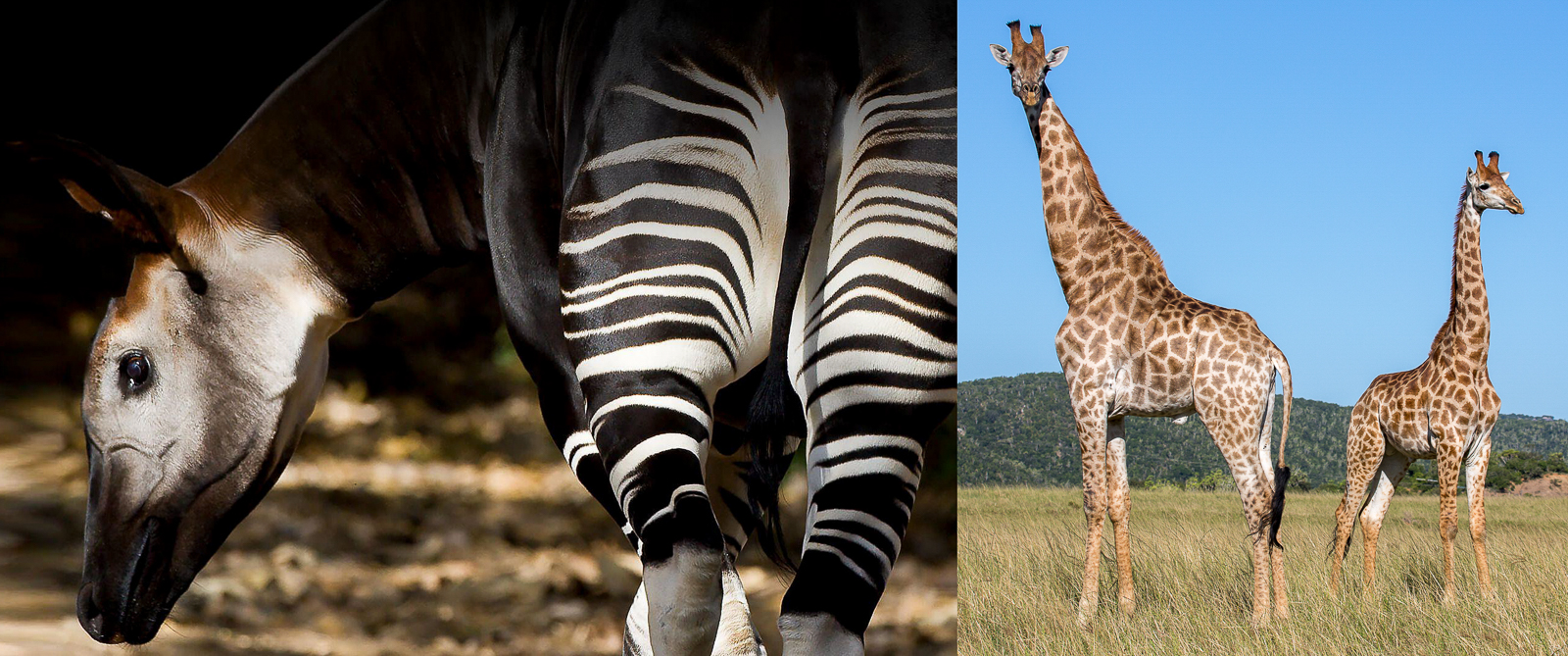
Giraffe: Fascinating African Animals
The giraffe may be iconic because of its distinctive appearance, but when you get into the physical details and behaviours of this species it reveals itself as an equally fascinating African animal.
As of 2021 genome sequencing suggests four distinct species with and seven subspecies. The elegant giraffe that occurs at Kariega Game Reserve is the Southern African giraffe, a subspecies of the Southern giraffe.
Giraffes very tall at around 5.5 meters, and males are taller than females. Adult giraffe males weigh around 1,200 kilograms while females are a delicate 800 kilograms. As you can imagine, these African animals need a large heart to pump blood around their bodies. A giraffe's heart weights around 12 kilograms. Their heart beat fluctuates from 90 beats per minute to an astounding 150 beats per minute under stress – unusual for such a large animal.
When giraffes bend down to drink their blood pressure can become too high, so they have a safety adaptation to limit blood flow to their brain while drinking. They also have blood vessels that constrict to stop their blood from leaving their brains too rapidly when they lift their heads. This is why giraffe always do a characteristic flick of their head once finished drinking, which is a great time to photograph them!
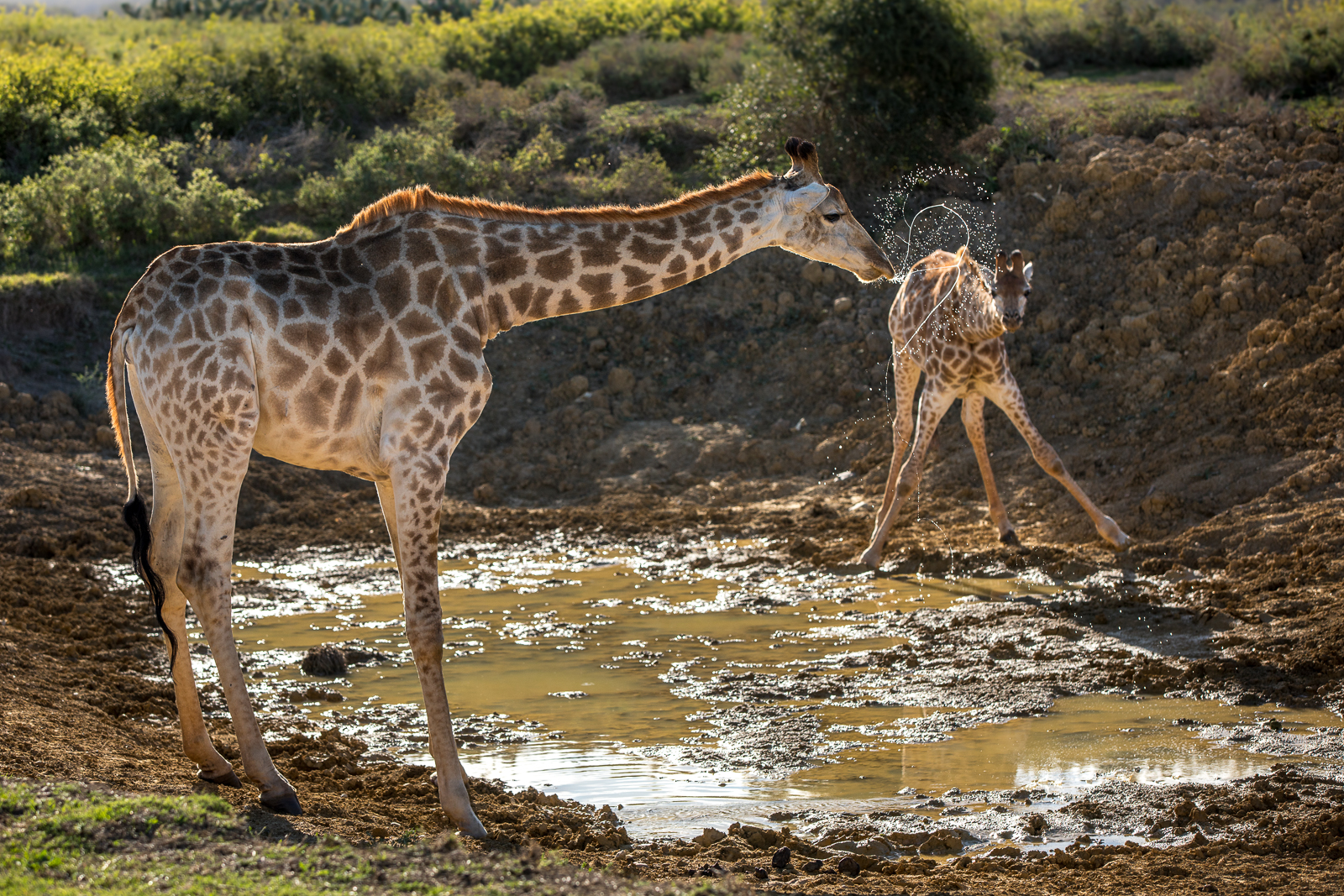
Interesting Physical Characteristics of Giraffe
Other interesting physical characteristics of the graceful giraffe are their long tongues (45cm) that they use to wrap around the leaves that they browse. Their tongues lack the sensitivity and blood supply that humans have so they are able to cope with the thorns efficiently. Giraffes also use of their tongues to clear their nasal cavities!
Giraffe horns are called ossicones and are made bone covered by hair and skin. Males giraffes have thicker horns as they use them to fight other males. Over time male giraffes loose the hair on top of their ossicones. Female giraffes retain this hair as they do not fight each other! The ossicones have a vascular system that may aid temperature regulation.
Giraffe also have very tight skin around their legs to decrease the blood flow to them.
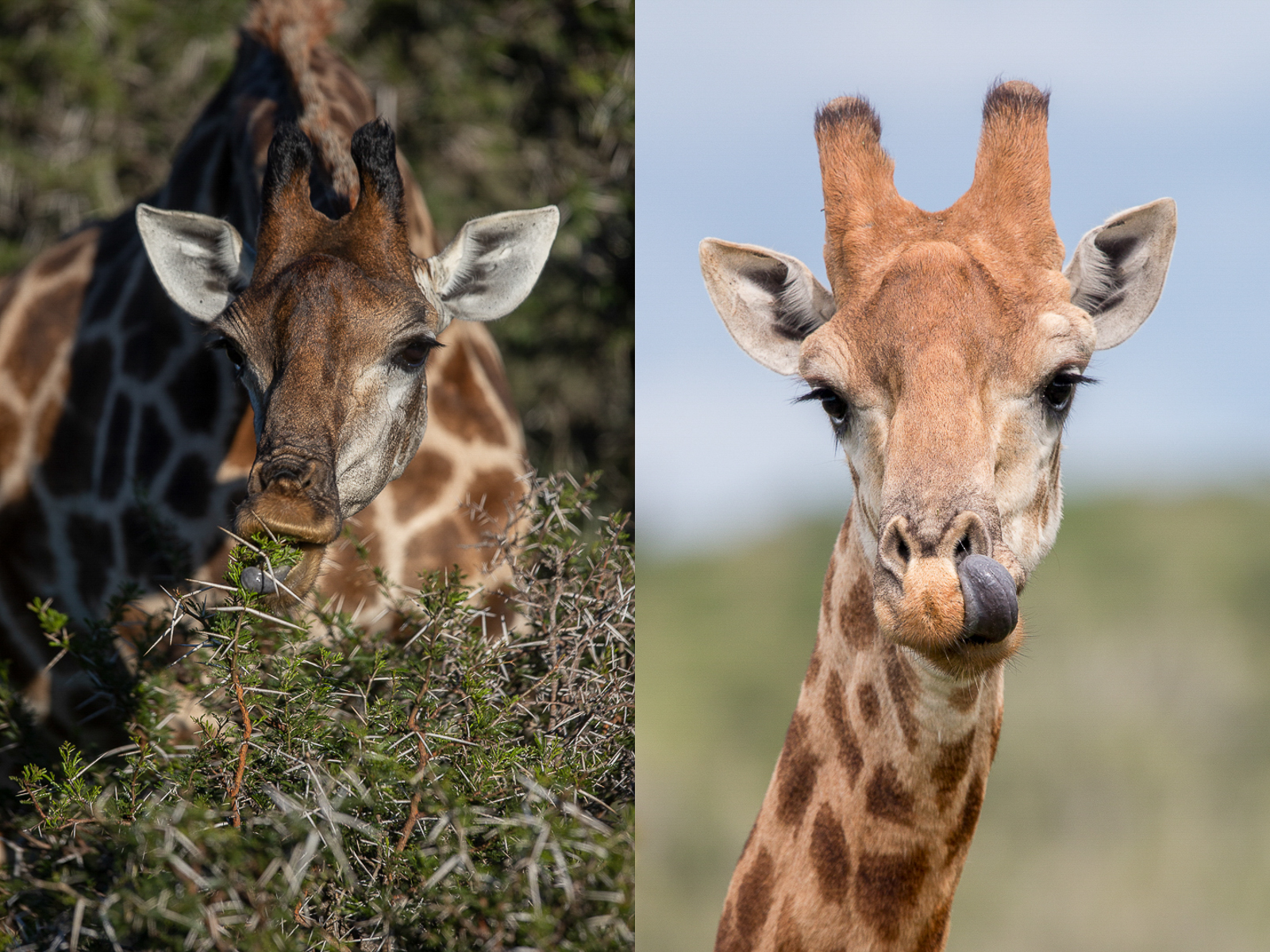
Male Giraffe Engage in 'Necking' for Dominance
Male giraffe engaging in a practice known as “necking”. This is a whole lot less benign than it sounds! Necking is how male giraffe fight for dominance over another male to promote their chance of mating with receptive females. Two male giraffe will stand next to each other and swing their 30 kg heads at each other. Their heads are at the end of a two meter long 100 kilogram neck. This swing is backed by the weight of their 1,000 kilogram bodies. The impacts are pretty intense and, giraffe have been known to knock each other out!
Sub-adult male giraffe will also engage in this behaviour, though not as intensely as fully grown male giraffes. Males will often strangely “court” each other after the combat is over and are frequently seen to mount each other. Severe fights though can result in serious injuries and even death.

Iconic African Giraffe Give Birth Standing Up
Male giraffe will mate with a female at any stage throughout the year. Gestation is a lengthy affair for giraffes, at around 14 months. This is means that calves are usually almost two meters tall at birth and weigh around 65 kilograms. The mother gives birth standing up, meaning the calf enters the world via an undignified bungee jump. As the calf falls it severs the umbilical cord and hits the ground hard - surely a traumatic way to enter the world! Amazingly giraffe calves stand within 30 minutes of birth and their mother can lick them to clean them up.
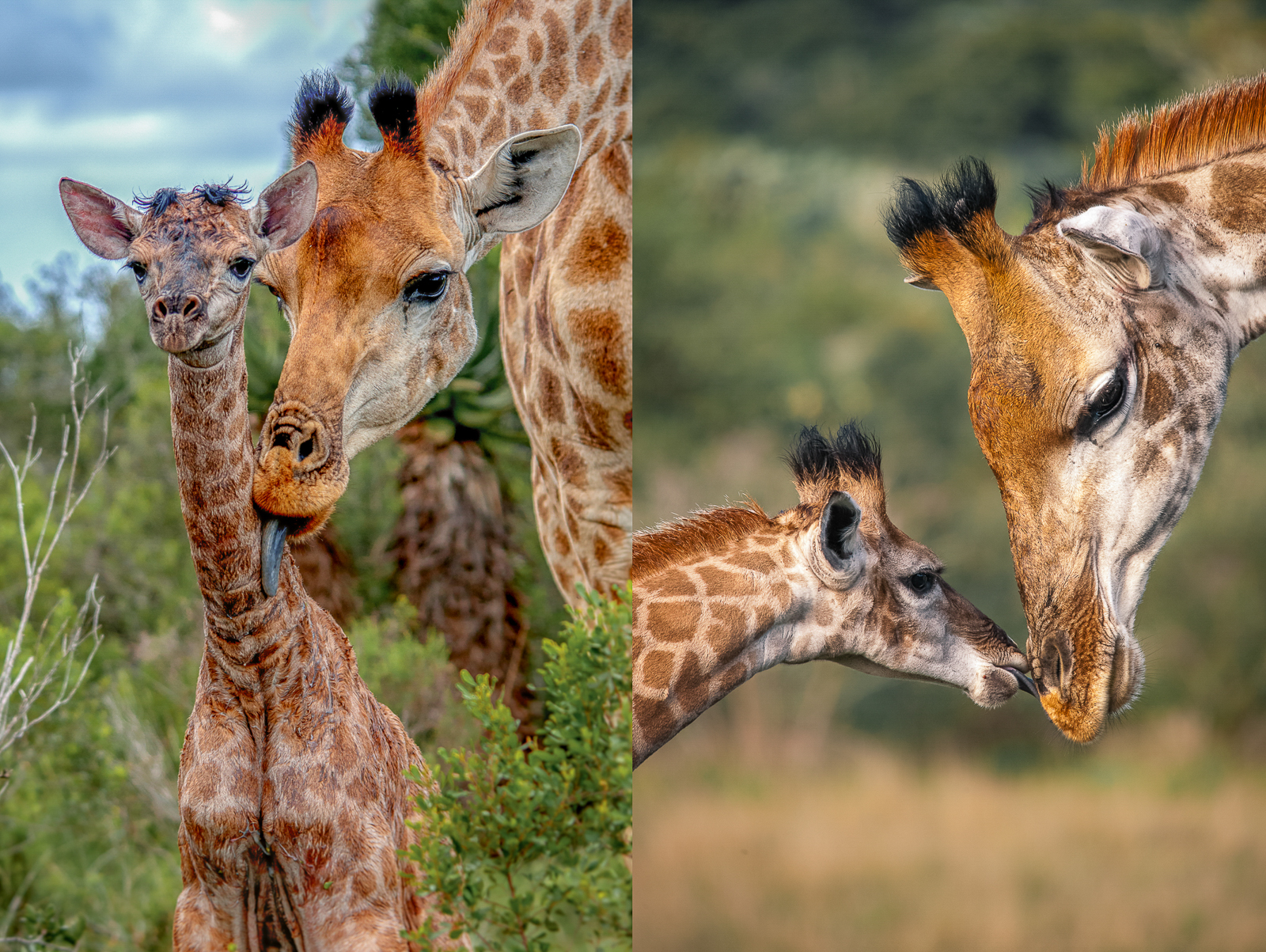
A Tower or Journey of Giraffe
Giraffe occur in groups known as towers or journeys. A journey is used when a group of giraffe are on the move, while a tower is used when they are stationary.
The social structure of giraffe is generally loose and ever changing. Generally, the larger groups will be associated females and their offspring. Males will move away from the matriarchal group as they get older and will spend time in loose groups with other males. Male giraffe become more independent as they get older.
A common misconception about giraffe is that they are mute. They do vocalise but not always at levels we can hear. Apart from snorts, they are known to “hum or sing” at a low frequency level. The exact reason for this is unclear.
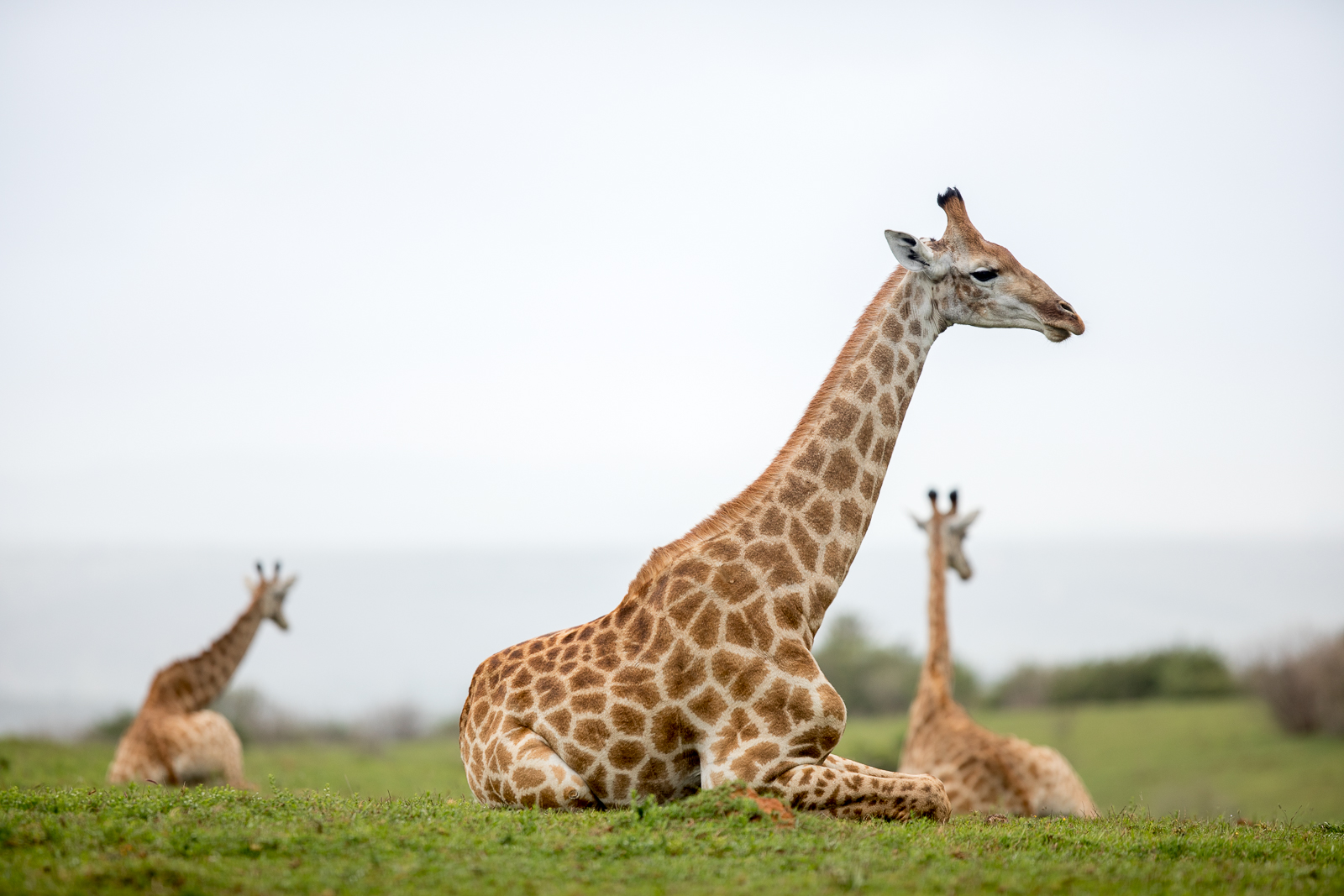
Giraffe sleep standing up and as well as by lying down. As they are ruminants they will lie upright and not on their sides, with their legs taking the pressure off their stomach. The giraffe will sleep for around four hours per day but often in roughly 40 minute periods. Their lifespan in the wild is around 25 years.
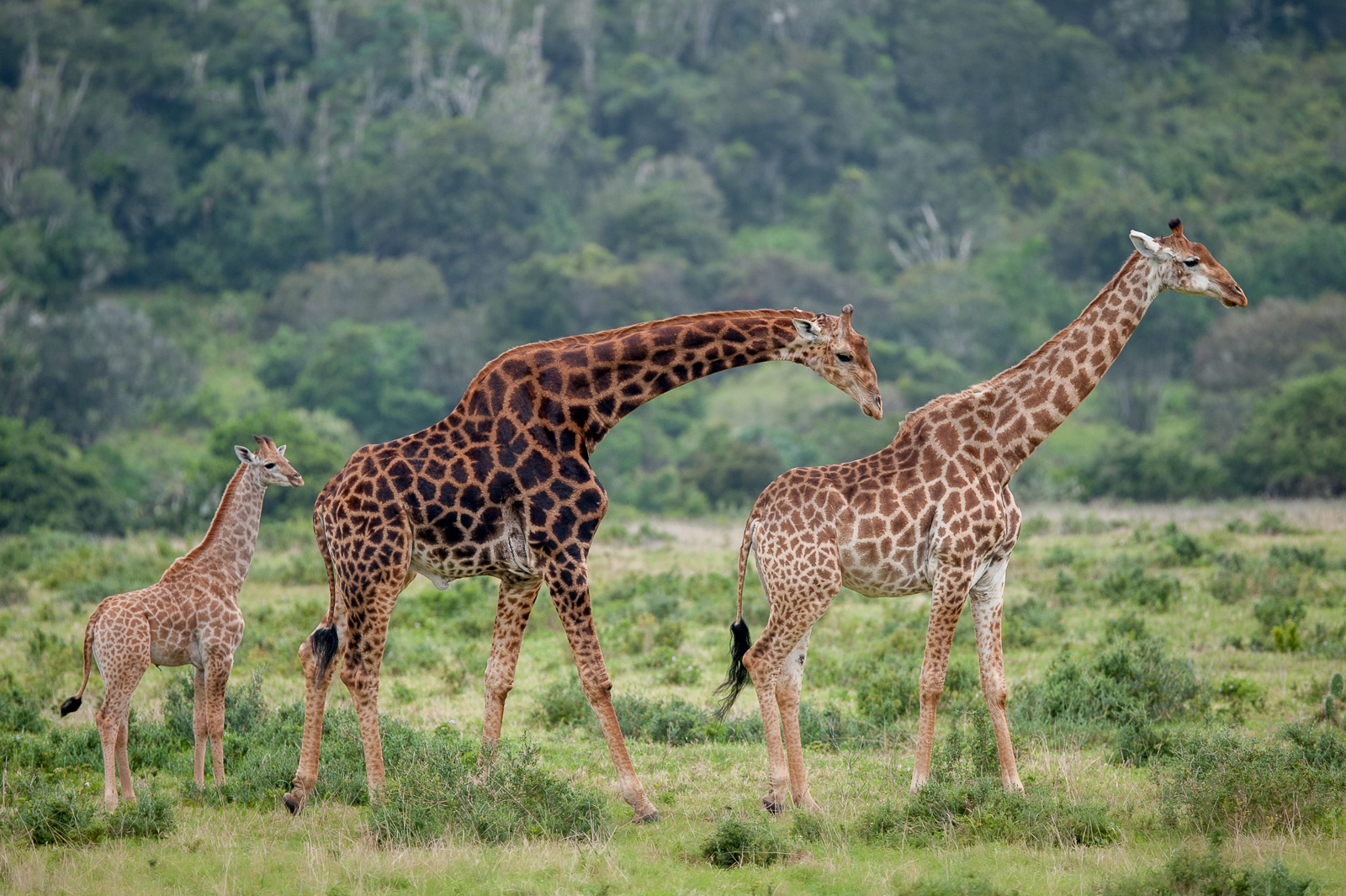
Giraffe are always a highly sought after species for guests to view during a safari. It has been an absolute privilege to introduce many guests over the years to their first ever wild giraffe. The look of amazement and awe on peoples faces is as special as the giraffe itself!
Did you see a giraffe for the first time while on you Kariega safari? Tell us about it on Facebook, Instagram or Twitter.
Do you dream of seeing a giraffe in the African wilderness? Book your Kariega Safari today! We can't wait to share the experience with you.
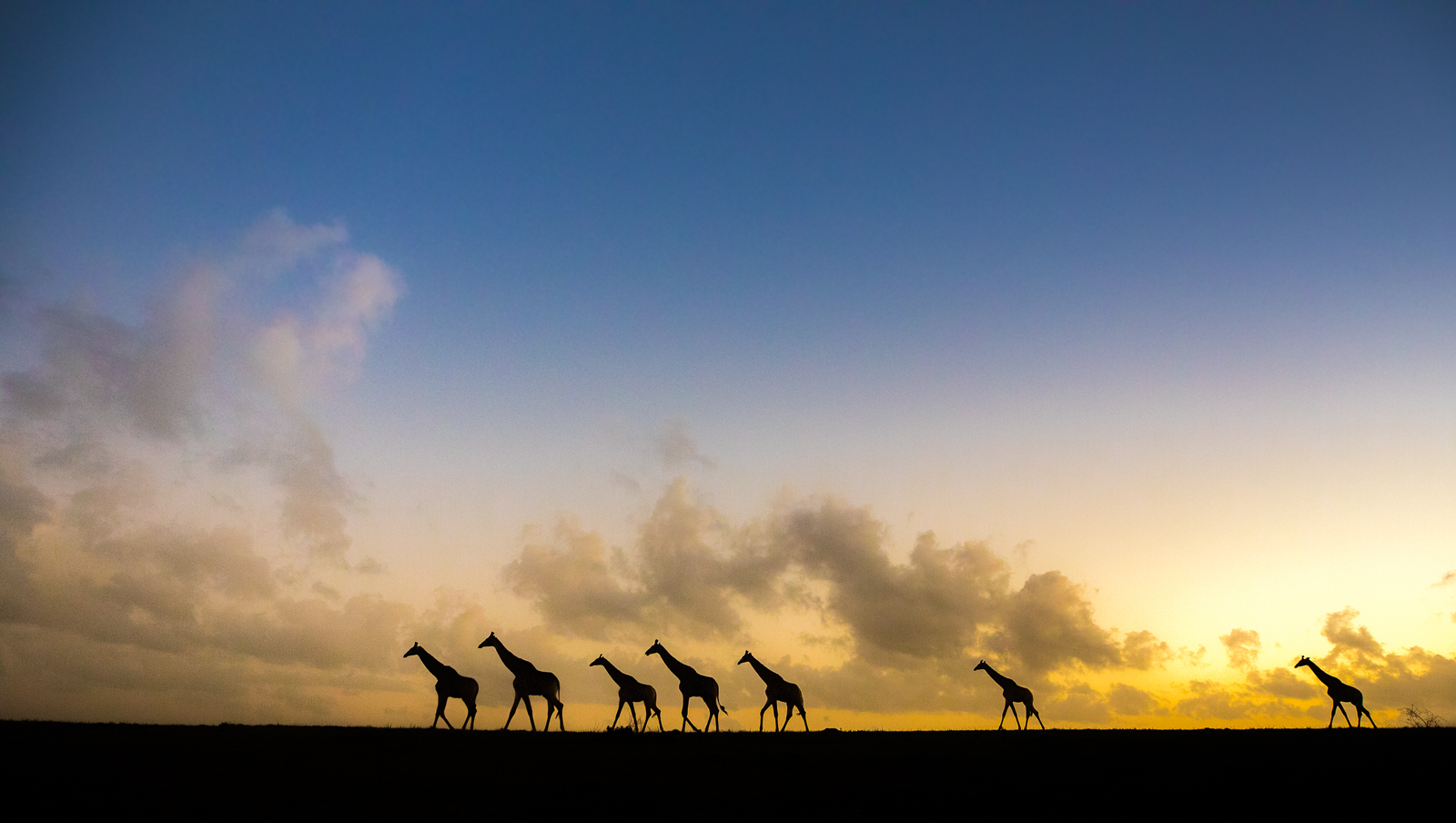
Photo credits to Kariega field guide Brendon Jennings and video credit to Kariega field guide Reece Dodd.









